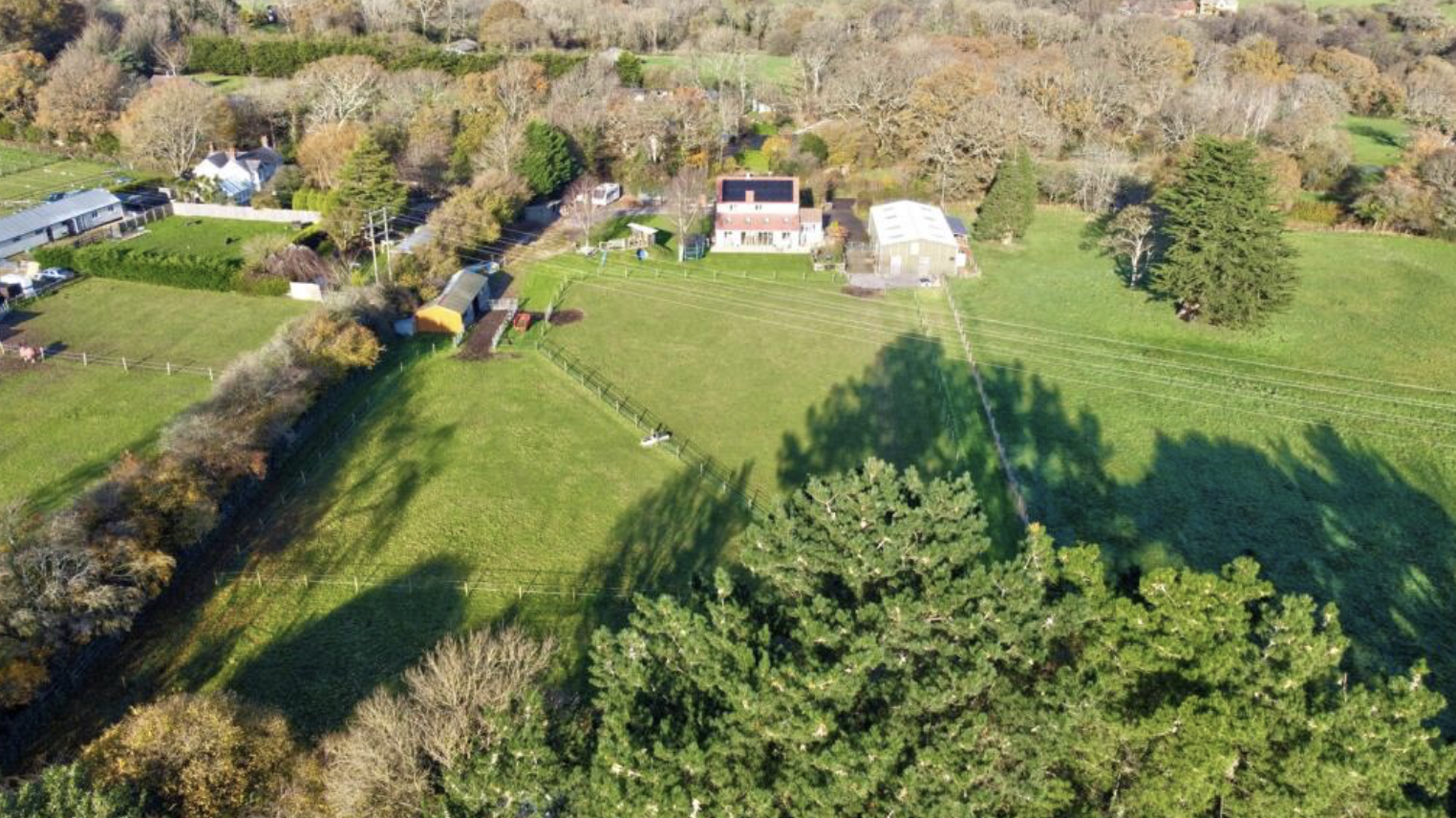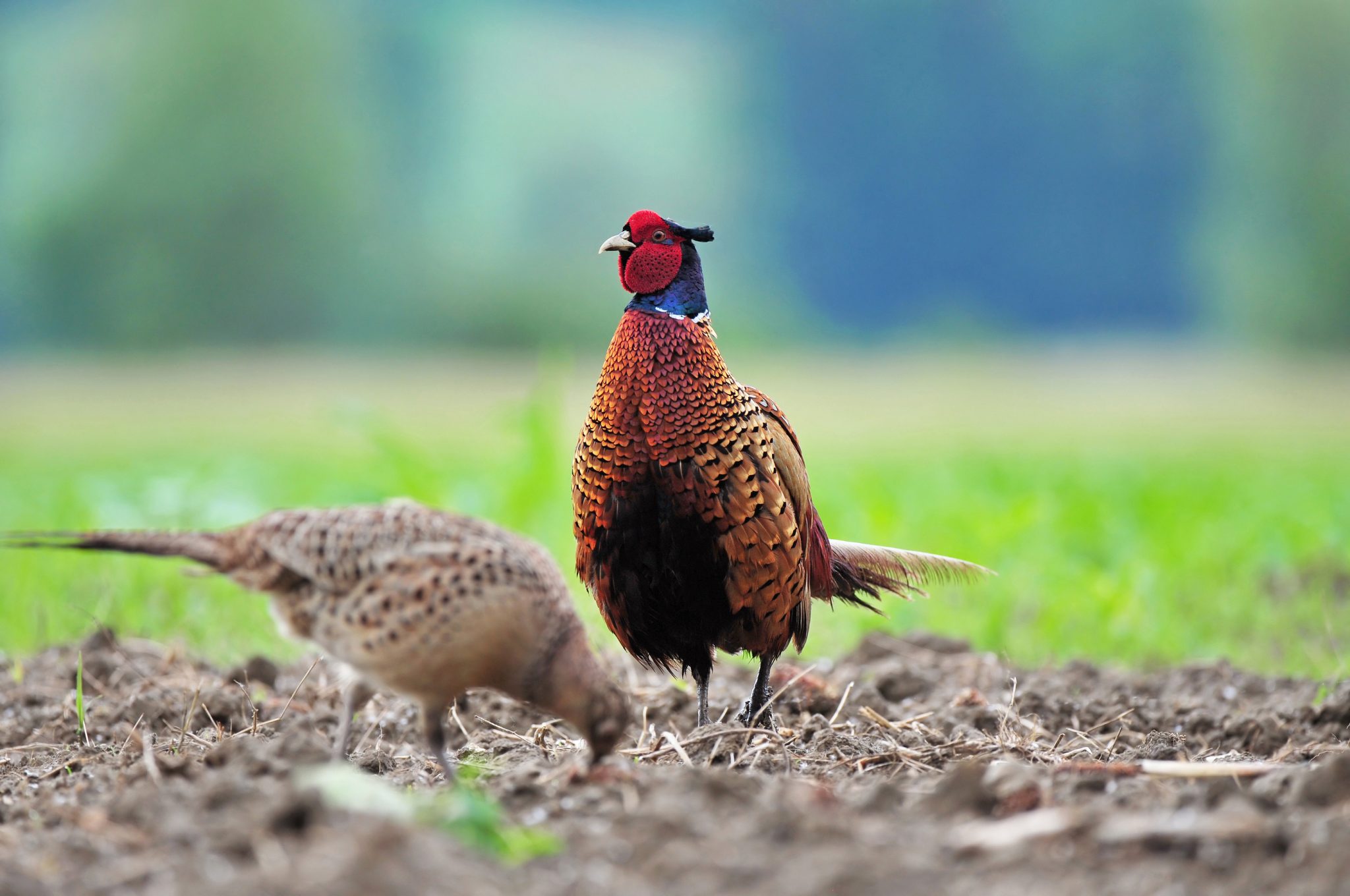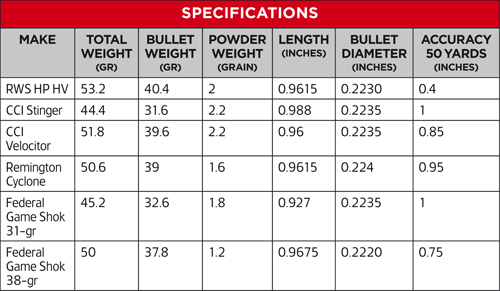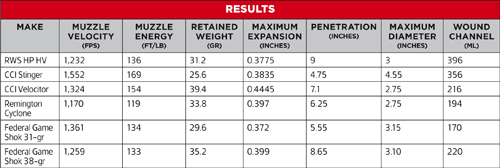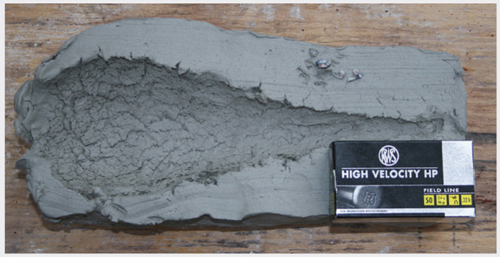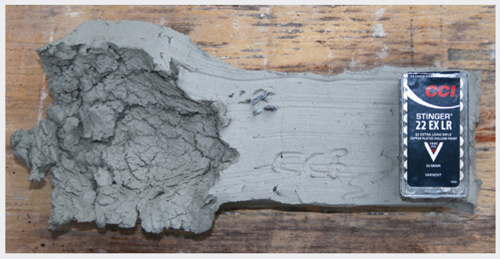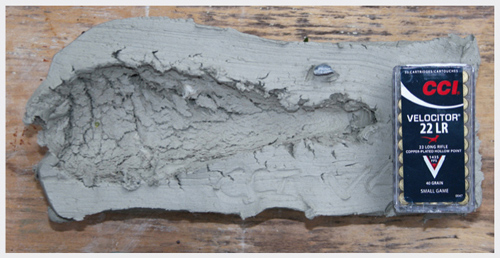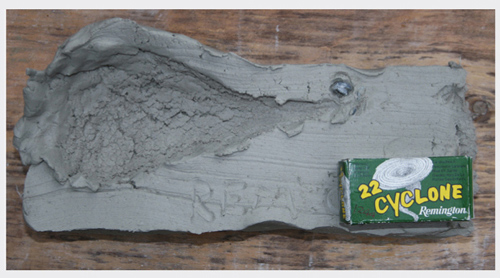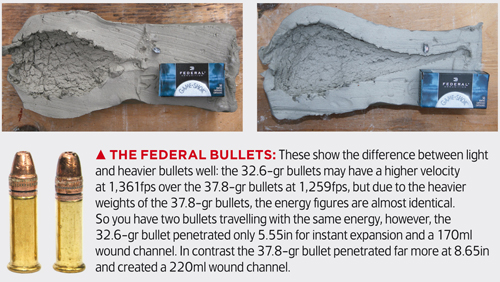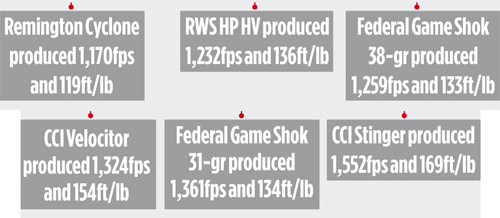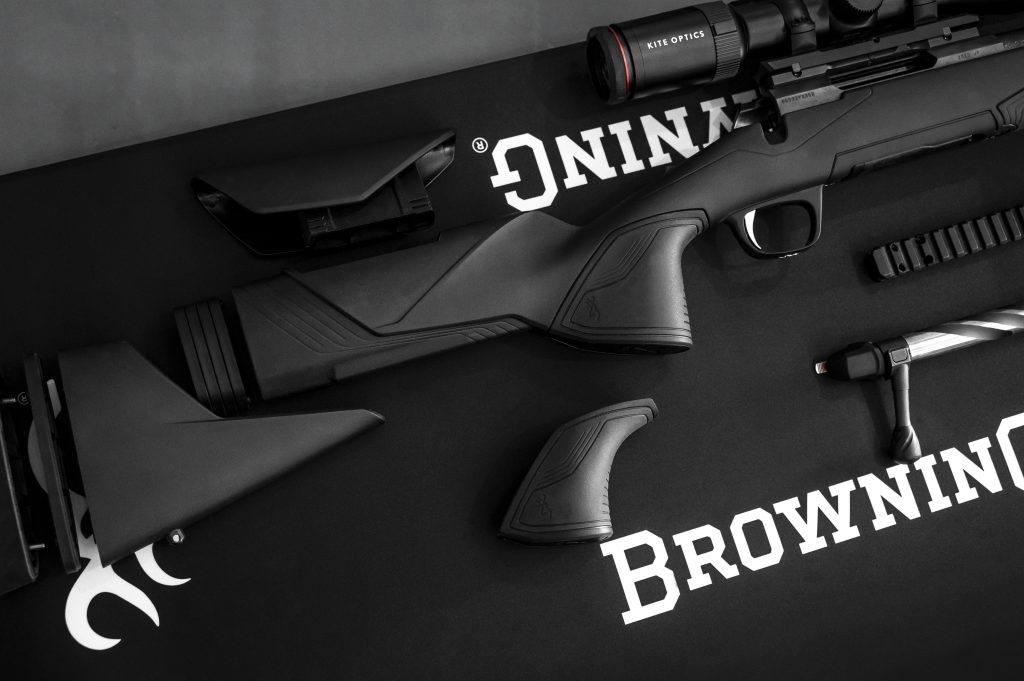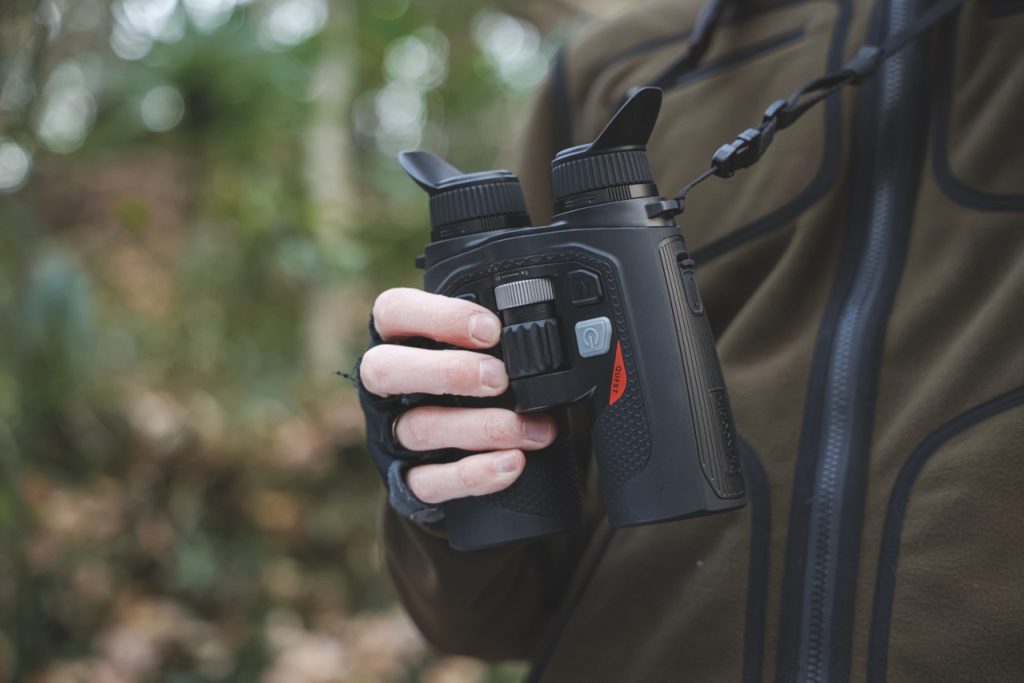Win CENS ProFlex DX5 earplugs worth £1,149 – enter here
What happened when Bruce Potts carried out a high velocity ammunition test?
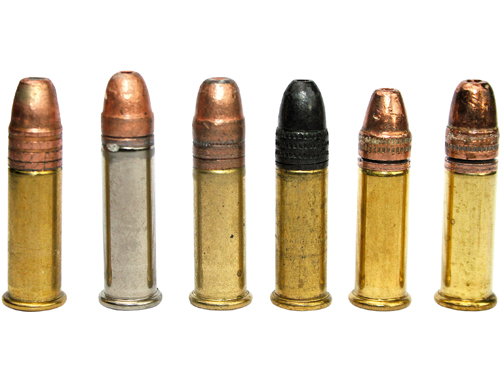
Speed, power and accuracy are essential for successful pest control — Bruce Potts tests six of the classic .22LR high velocity ammunition rounds to see which is the top performer.
There is a vast number of manufacturers and styles of bullet to choose from – most popular are the .22LR subsonic rounds.
If people want a bit more power they tend to jump straight to the .22WMR (Winchester Magnum Round) or .17HMR or .17 MACH rounds. However, you could opt for one of the many .22LR High Velocity (HV) rounds available.
These range from bullets travelling at 1,250fps all the way up to the hyper velocities of 1,650fps – which have the added benefit of a flat trajectory and more energy down-range. However, to achieve some of these higher velocities a lighter bullet is needed and this can compromise performance at longer ranges.
I picked a cross-section of .22LR HV rounds available all with hollowpoints for vermin control and shot them into my ballistic putty to gauge their performance.
L-R: The rounds on test were RWS HP HV, CCI Stinger, CCI Velocitor, Remington Cyclone, Federal Game Shok 31-gr and Federal Game Shok 38-gr.
TEST REGIME
I chose six different cartridges from across the board to reflect the sort of performance you could expect from commonly available ammunition. Each cartridge was weighed, measured and analysed before shooting to compare their statistics. They were then shot at a 50-yard range to view accuracy and compare velocity and energy readings. Finally, each round was shot into the ballistic putty at 50 yards and wound channel and bullet-retained weights and shapes were recorded.
What is interesting about shooting bullets side by side in a controlled environment is that direct comparisons can be made. From the results you can choose whether you want a fast-expanding bullet or deep penetrator or the most accurate bullet.
AMMUNITION
RWS HP HV: RWS is a premium brand, its sporting ammunition being as good as the target variety. The 40-gr bullets are copper clad and washed with a thick greenish wax for lubrication. It has a deep hollow point and showed consistent weight and bullet conformity.
CCI STINGER: CCI offers myriad cartridge choices, but most famous has to be its Stinger round. It has a 32-gr bullet to achieve the high velocities and is copper washed with a dry lube. The Stinger’s case is longer than all the other .22LR rounds but overall length still remains the same.
CCI VELOCITOR: This offers a heavier bullet at 40-gr and, as with the Stingers, has a copper-washed finish and dry lube. The bullet shape is similar to the RWS and is designed for small game use due to its heavier weight.
REMINGTON CYCLONE: This is one of the many Remington HV rounds. They are old-school lead bullets of 39-gr (not 36-gr as listed) with thin wax coating and a truncated bullet shape and hollowpoint design. The Yellow Jacket and Thunderbolt HV rounds are also good, but I have found these Cyclones more consistent.
FEDERAL GAME SHOK 31-gr: Federal makes great centrefire ammunition and its .22LR is similarly consistent. The 31-gr is another copper-washed design with light lubrication. The design has a short truncated profile. The hollowpoint is quite small.
FEDERAL GAME SHOK 38-gr: This round does have a copper-washed bullet, but it is longer in length with more bearing surface than the lighter 31-gr bullet and the hollowpoint is larger and deeper.
Analysis of the results:
RWS HP HV
The most consistent over the chronograph and accuracy was excellent, with five shots disappearing into only 0.4in at 50 yards. Not only that, but the penetration was the greatest at 9in and the combination of 1,232fps velocity from the heavy 40.4-gr bullet resulted in the largest wound channel volume of 396ml.
CCI Stinger
This gave the highest energy figures of 169ft/lb and, because of the light, fragile bullet design, the bullets exploded on impact resulting in only 4.55in and 356ml channel.
CCI Velocitor
The heavy Velocitors at 39.6-gr penetrate deeply. Though starting out slower at 1,324fps for 154ft/lb energy, the bullet retained nearly all its weight at 39.4-gr and penetrated 7.10in. However, despite its impressive bullet expansion of 0.4445in, it only produced a 216ml wound channel.
Remington Cyclones
These are quite mild compared to the other HV rounds, but at 1,170 fps the 39-gr bullet penetrated a good 6.25in with a good bullet expansion of 0.397in. The wound channel volume was 194ml, not that far behing the Velocitors.
Conclusions from the high velocity ammunition testing
Do you want a fast-expanding bullet that causes maximum initial damage with little penetration or do you require deep penetration and a larger overall wound channel? For shooting rats, feral pigeon or feathered vermin, fast-expanding bullets would be best as they are “soft skinned” and these rounds would kill instantly with less chance of over-penetration. The heavier bullets have a better ballistic coefficient, so often shoot more accurately and retain energy down-range. For rabbits or close-range foxes, these would be preferable.
A box of .22LR high velocity ammunition will offer good range and versatility, but remember that these rounds will behave differently in different rifles.
This article was originally published in 2014 and has been updated.
Related Articles
Get the latest news delivered direct to your door
Subscribe to Shooting Times & Country
Discover the ultimate companion for field sports enthusiasts with Shooting Times & Country Magazine, the UK’s leading weekly publication that has been at the forefront of shooting culture since 1882. Subscribers gain access to expert tips, comprehensive gear reviews, seasonal advice and a vibrant community of like-minded shooters.
Save on shop price when you subscribe with weekly issues featuring in-depth articles on gundog training, exclusive member offers and access to the digital back issue library. A Shooting Times & Country subscription is more than a magazine, don’t just read about the countryside; immerse yourself in its most authoritative and engaging publication.



